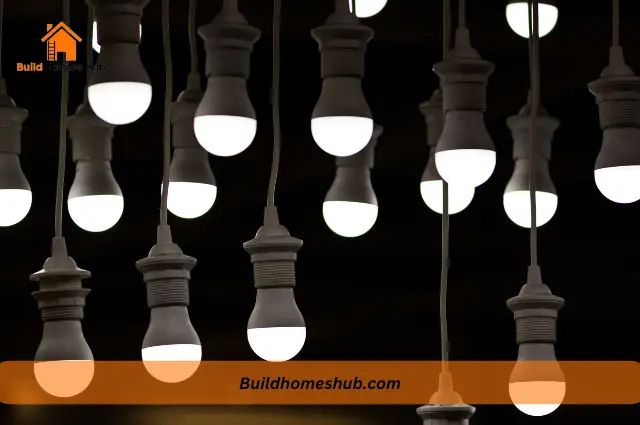The living room is often the centerpiece of a home, a gathering place for family and friends, and a space for relaxation and entertainment. It’s a versatile area that requires flexible lighting to accommodate a wide range of activities, from reading and watching television to hosting parties and casual conversations. Good lighting can create a warm, welcoming atmosphere, enhance the aesthetics of the room, and even influence the mood and comfort of those within it.
Ceiling lights, in particular, can play a critical role in shaping the ambiance of a living room, offering both functional illumination and decorative appeal. In this post, we delve into the presence, impact, and options of ceiling lights in living rooms.
Historical Perspective on Living Room Lighting
The concept of living room lighting has significantly evolved over the centuries. In the past, lighting was purely functional, with natural daylight supplemented by the glow of fireplaces, candles, and later, oil or gas lamps. With the advent of electricity in the late 19th and early 20th centuries, homeowners gained much more control over their indoor lighting. However, ceiling lights were not immediately commonplace. Early electric lighting often mimicked the sconces and portable lamps of the gaslight era.
Do Living Rooms Have Ceiling Lights?
Yes, living rooms have ceiling Lights. As technology advanced and interior design trends changed, ceiling lights became more popular, initially in the form of chandeliers in wealthier households and later spreading to homes of all types with the introduction of more affordable fixtures. These fixtures were installed directly into the ceiling, providing general, ambient lighting that could illuminate a larger area than most floor or table lamps. Over time, as open-plan living became more popular, ceiling lights started to play a pivotal role in providing a well-lit, inviting space.
Their design and usage have continued to evolve, mirroring changes in technology, lifestyle, and aesthetic preferences. Today, ceiling lights in living rooms are a common sight, but their presence, style, and functionality can greatly vary, as we will explore in the following sections.
The Role of Ceiling Lights in Modern Living Rooms
Ceiling lights play an integral role in shaping the ambiance of modern living rooms. Given the multifunctional nature of living rooms, they serve not just as a source of illumination but also contribute significantly to the overall aesthetic and design scheme of the space.
Primarily, ceiling lights are responsible for providing general or ambient lighting in the room. This refers to the basic level of illumination that allows people to move about safely and see clearly. Ceiling lights, positioned strategically, spread light evenly across the room, reducing the contrast between light and shadow.
In terms of aesthetics, ceiling lights can act as a focal point in a living room. Chandeliers, for instance, can exude a sense of luxury and elegance, while contemporary pendant lights can create a more modern, minimalist appeal. Ceiling lights also provide an opportunity to express personal style, with a vast array of designs, materials, and sizes available on the market.
Types of Ceiling Lights for Living Rooms
1. Recessed Lighting
Recessed lighting, also known as downlights or can lights, is a popular choice for living rooms due to its sleek and minimalistic design. These lights are installed into hollow openings in the ceiling, providing a streamlined look that’s perfect for modern or contemporary interiors. Recessed lights are great for general lighting, and they can also highlight specific areas or features in your living room.
2. Pendant Lights
Pendant lights hang down from the ceiling and can serve both as a decorative element and a light source. They are available in a wide range of styles, sizes, and materials, which makes them a versatile choice for any living room. Depending on their design, pendant lights can provide ambient, task, or accent lighting. Grouping several pendant lights together can create an impressive visual effect.
3. Chandeliers
Chandeliers are a classic choice for living room ceiling lights. They serve as an elegant focal point and provide abundant light. Chandeliers can range from ornate, traditional designs to sleek, modern styles, making them suitable for various interior designs. However, due to their size and grandeur, they’re often best suited for large living rooms with high ceilings.
4. Track Lighting
Track lighting consists of several lights mounted on a track system. This type of lighting is flexible because the individual lights can be directed to different areas of the room. Track lighting is excellent for highlighting artwork, architectural details, or other features in the living room. Plus, the design and layout of the track can be customized to fit the aesthetic of your living room.
Pros and Cons of Ceiling Lights in Living Rooms
Pros:
1. Ample Illumination
One of the primary advantages of ceiling lights in living rooms is that they provide a good amount of illumination, covering a large area. This can be particularly useful in spacious living rooms where other light sources may not provide sufficient lighting.
2. Variety of Styles
Ceiling lights come in a wide range of designs, sizes, and styles. You can choose from chandeliers for a touch of luxury, pendant lights for a contemporary feel, recessed lighting for a minimalist look, or track lighting for a modern and adjustable option. This wide variety ensures you’ll find something that matches your living room’s aesthetics.
3. Saves Space
Unlike floor lamps or table lamps, ceiling lights don’t take up any additional space in your living room. This can be a significant advantage in smaller rooms where space is at a premium.
Cons:
1. Installation
Ceiling lights can be harder to install than other types of lighting, often requiring professional assistance. This could add to the overall cost and time taken to set up your living room lighting.
2. Fixed Position
Unlike table lamps or floor lamps, which can be moved around to change the lighting setup, ceiling lights are fixed in place. If you decide to rearrange your furniture, you might find that the lighting no longer works as effectively.
3. Maintenance
Replacing bulbs in ceiling lights can be more difficult than in other types of lighting, particularly if the ceiling is high. Cleaning chandeliers and other complex ceiling light fixtures can also be quite a task.
Alternatives to Ceiling Lights in Living Rooms
While ceiling lights remain a popular choice for many homeowners, there are several other alternatives that can provide effective lighting and add an aesthetic touch to your living room.
1. Wall Sconces
Wall sconces can add a touch of elegance and sophistication to any living room. They can be used to highlight artwork or architectural features or provide a warm and inviting ambiance. Additionally, they save floor space and can be a practical solution for small living rooms.
2. Floor Lamps
Floor lamps are a flexible and versatile lighting solution. They come in a wide variety of styles and designs, from classic to modern, and can easily be moved around to cater to your specific lighting needs. Furthermore, certain designs can serve as statement pieces, adding character to your living room.
3. Table Lamps
Table lamps are perfect for creating a cozy and intimate atmosphere. They are great for localized lighting, such as reading areas, and can also serve as decorative pieces that complement your living room’s interior design.
Conclusion
Whether or not a living room should have ceiling lights depends largely on your personal preferences, the size and layout of the room, and the overall design scheme. While ceiling lights can provide ample and balanced lighting, alternatives like wall sconces, floor lamps, and table lamps offer versatility and can contribute to the aesthetic appeal of the room. Each option has its own advantages and potential drawbacks, so it’s crucial to weigh these factors carefully.
Ultimately, the best choice for living room lighting will create a welcoming, comfortable space that reflects your style and meets your functional needs. It’s not just about illumination; it’s about enhancing the ambiance, highlighting the room’s best features, and creating a space where everyone feels at home.
I hope to help you make the right choices with my content. I am passionate about building new homes and renovations. Follow me, on my socials, I drop nice stuff that may be helpful.











